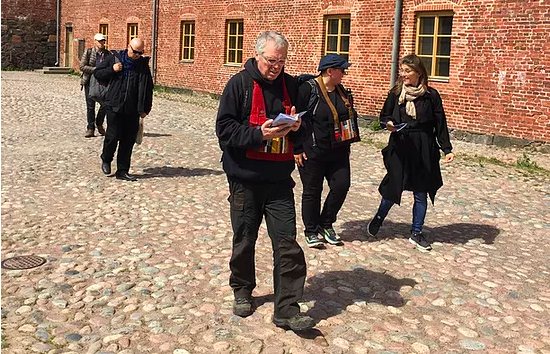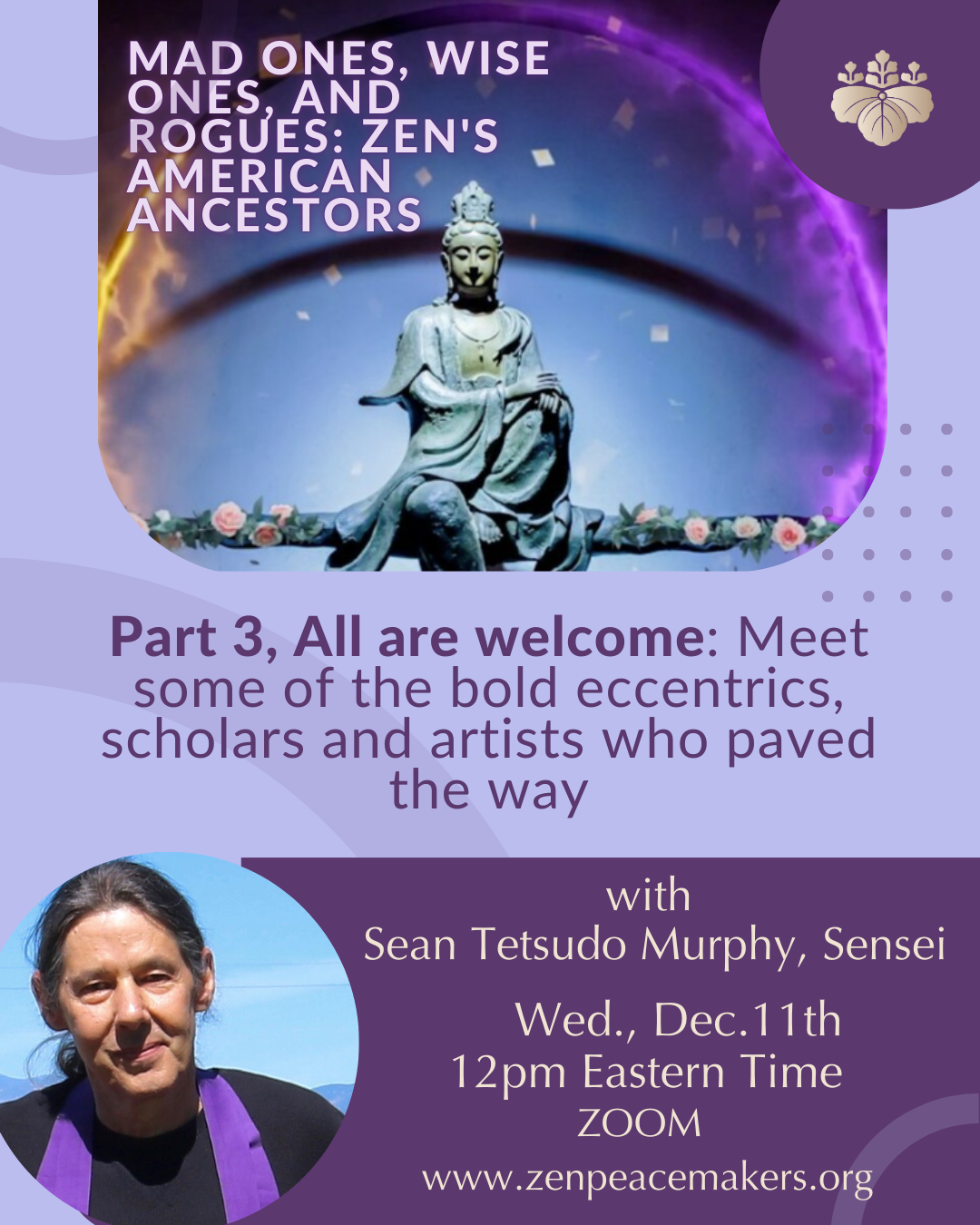HELSINKI, FINLAND. This post is excerpted from the original that was written by retreat co-organizer Mikko Ijäs and published as Bearing Witness to the 1918 Civil War of Finland on PeacemakersFinland.org, June 8, 2018. Members and affiliate groups of ZPI who have been motivated by the practice of Bearing Witness retreats and the Three Tenets of the Zen Peacemakers, have self-organized and led programs like this one at sites around the world. Examples include Bearing Witness to the refugee crisis in Lampedusa, Italy and in Piraeus, Greece; to the ethnic cleansing in Bosnia-Herzegovina in the 1990s, and many more.
Like many who have organized Bearing Witness retreats around other events, this retreat’s co-organizer, Mikko Ijäs, has a family history connection to the Finnish Civil War. Each Bearing Witness event is unique in its participants, location, subject, context and in the cultures it acknowledges. When these factors are experienced together, around the world, Bearing Witness events raise a unique planetary awareness of the universal nature of us human beings: our violent shortfalls, our deep and hope-filled unity.
—
We held our first Bearing Witness retreat here in Helsinki in late June 2018. The context of the retreat was set around the prison camps of the Finnish civil war of 1918.
One hundred years ago Finland was torn in half by two opposing forces, the Whites and the Reds [editors note: these refer to political groups local to Finland]. The brutal conflicts and mistreatment of the prisoners soon ended, but the legacy of this tragedy that claimed one per cent of the whole population has continued to this day.
Over eleven thousand people died in the prison camps hastily established for the Red captives waiting for their trials.
The retreat was composed around three main locations: the Suomenlinna fortress island just outside Helsinki, Dragsvik garrison in Tammisaari, and Hennala garrison in Lahti. All of these locations had prison camps from 1918 to 1919. Actually Dragsvik continued to function as a correctional institute for the political activists until the Second World War. These camps represent only three of more than ten camps established to accommodate the c. 80,000 captives that were rounded after the fighting stopped.

Mass grave memorial in Tammisaari
The winning side of the conflict, the White Guard and the Germans, had no idea of the numbers of their opponent. The huge crowds of the captives really posed a big problem for them. The detainees were sent to improvised concentration camps (actual word that was used for these camps in 1918) to wait for their trials. The poor maintenance and lack of supplies resulted in thousands of unnecessary deaths. These camps were guarded by Finnish and German officers, and often there were summary executions even for the very young women.
These camps were the first concentration camps in Europe.
I was struck by how much we Finns still tend to take sides. The dual nature of the civil war is still alive in most of us. I am a mix between different backgrounds of Whites and Reds, but as I was thinking the ways to improve the retreat for upcoming years, I noticed how I couldn’t think anyone “sensible enough” to speak about the Red terror of civil war. Even after one hundred years, I categorized these people into sensible and insensible!
(…)
The civil war was churned up by various difficult factors. The whole country was in turmoil after the revolution in Russia in 1917. Finland began to work for their own independence and declared its independence in December 1917. Political disputes and other factors led into the civil war in January 1918. The reasons behind it are complex, and the colorful groups of people from various backgrounds, calling themselves as Reds, were inflicting serious terror among the rest of the population. This rebellion had to be dealt with, but the result was even worse. The political witch-hunts continued until the WW2. After all this time, it is amazing how we still identify on either side. Our retreat participants identified themselves being on both sides or being a mix of both.
Revealing this side of myself is something that I certainly have to work with. This matter will also be addressed more thoroughly when we have another retreat next year in early July 2019.
(…)

Retreat leader Roshi Frank De Waele, retreat organizer Maija Ijäs and local spirit holder Lutheran priest Maika Vuori visiting one of the civil war prisons at Suomenlinna fortress island, Helsinki.
DAY 1.
The first day of our retreat began at the Church of Kallio, which is the former working class neighborhood and the center for red rebellion in 1918. Our retreat leaders Roshi Frank De Waele from Belgium, and the local spirit holder Lutheran priest Maika Vuori introduced themselves. Roshi Frank spoke about the Three Tenets of the Zen Peacemakers and the different elements that comprise the bearing witness retreats, which originates in 1996 when the Zen Peacemakers had their first bearing witness retreat at Auschwitz-Birkenau in Poland.
During the retreat we visited different monuments, memorials, and places of great grief and sorrow. We had moments for silent reflection, we had Buddhist and Christian services, and we practiced the Way of the Council, a kind of listening circle, which is a pivotal element of the retreats by the Zen Peacemakers. We didn’t visit the different locations alone. We also had people describing the history of these sites, and telling the stories of the people who were once placed there.
(…)
At the end of our first day we had a very rare chance to hear the testimony of Esad Landzo from Bosnia. He was invited to speak for this retreat due to his very rare experience of being on the side of the perpetrator. During the Bosnian war in 1990’s he was one of the guards of the infamous Celebici prison camp. He was a member of a renegade squad of Bosniaks who had set up a camp for Bosnian Serbs. This group was a band of misfits who drank and tortured their detainees. Born in 1973 Esad was 19 years old when it all happened.
He was charged by the International Criminal Tribunal for the former Yugoslavia (ICTY) for willful murder, torture, causing intense suffering or of inflicting serious bodily injury, and inhumane treatment. He was sentenced for 15 years in prison here in Finland.

What makes Esad so special is his radical approach to his own actions. When he was put on trials he had no remorse. He was raised to do what he did. He described us that one of the biggest problems was that he had no fear. He had no supreme power to be afraid of. Rather, taking someones life made him feel like he was God himself.
But something changed in him when he was shown compassion by his attorney and her family. This was the first contact to people, who were not corrupted by the war and violence. Given this chance, it made him re-evaluate his own past actions. He accepted all psychiatric help that was provided for those who were willing to have it. This process began his path towards accepting his own past actions, and his search for forgiveness.
(Continued)



